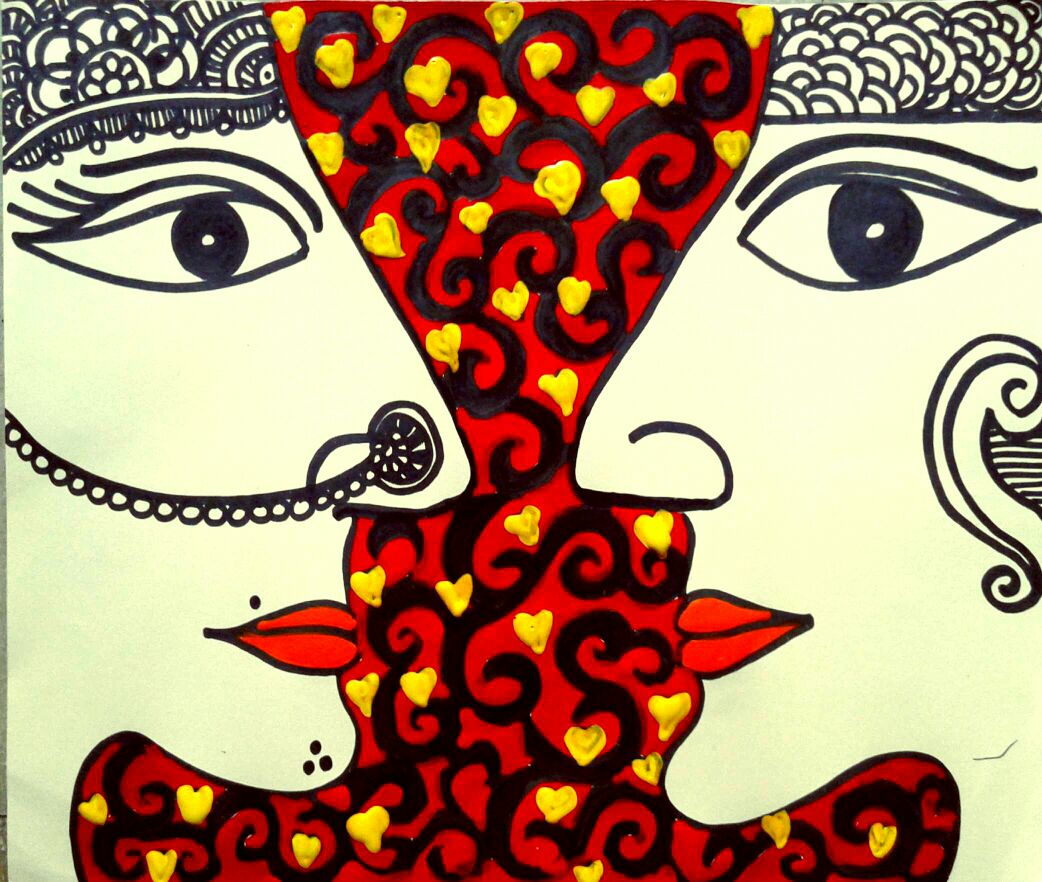
[This piece of article is provided by Ms. SONAM DHINGRA who is a prominent art teacher at City Vocational Public School, Meerut, by profession and an artist herself. She has done in-depth research on indian arts and crafts.]
Madhubani Paintings are an indigenous art form of a quaint village of Bihar and can be identified from the following features:
• It is practiced only by the females of the region.
• For centuries it has been done on walls and floor on the occasion of marriages and other domestic rituals.
• Although the images were similar, women of different castes developed distinctive styles of painting. Different castes involved were- Mahapatra Brahmin, Kayastha, Dusadh.
• The paintings are entrusted with energy forms, stuffed with all details. Austerity is profusely maintained in paintings, a relentless energy and a sense of magic which perhaps has its source in Tantaric ritual and worship.
• The painting is an earthen palatte of ochre’s and umber browns, dust pinks, dull turmeric and earth reds.
• The outlines are in a fine black line; here the emphasis used to be given on the volume and depth.
• Generally no space is left empty; the gaps are filled by paintings of flowers, animals, birds and even geometric designs.
• Like all the art forms the eyes are the source of Shakti, central part of power.
• Main attributes of all the Madhubani paintings are double line border, ornate floral pattern, abstract like figure of deities and bulging eyes and a jolting nose of the faces of the figures.
• It depicts nature and Hindu religious motifs and the theme generally revolves around Hindi deities like Krishna, Ram, Shiva, Durga, Lakshmi and Saraswati.
• Natural objects like sun, the moon and the religious plants like Tulsi are also widely painted along with scenes from royal court and social events like weddings.
The genuineness of contemporary Madhubani painting is by two criteria. The first is visual and conceptual adherence of an art work to a putative original form and second is the insider state of the artist, which determines how artistic experiment and improvisation is judged.
There is no basic difference between Mithila art and Madhubani art. Now Madhubani art is also called Mithila art but Madhubani art is famous in the whole world. Madhubani is a district of Bihar of neighbouring country India. Some parts of Mithila fall in the Indian Territory and some parts of Mithila also fall in Nepal. The whole Mithila region is called Mithilanchal. Madhubani folk art, in short, is the medium of expressing the inexpressible. Its focal point is the image. These images were, so to speak, the shapes of their desires. It gave a definite structure to the religious upliftment and security in god and divine powers.
